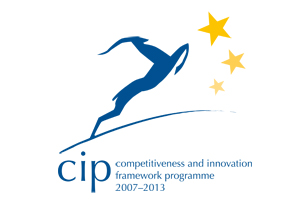| Good Practice Innovation Sheet |
  |
| Items |
Description |
| 1. WHO |
| Key people and organisations (initiator, leader, partners) |
Malta Tourism Authority and the Gozo Tourism Association |
| Coastal and Marine Union EUCC and Ministry for Gozo |
| |
| Key Figures |
Surface |
Inhabitants |
Tourism arrivals |
Tourism nights |
| 67 Km2 |
31,296 |
125,580 |
848,851 |
| 2. WHY |
| Reason for taking the good practice action |
The lack of natural water resource in the Maltese Islands is a critical factor and water has always been considered of strategic national importance. Freshwater availability is one of Gozo’s environmental problems in which all sectors including tourism are affected. Given this scenario, the Ministry for Gozo through the ecoGozo action plan is implementing a plan on the rehabilitation and cleaning of its valley basins:
- to attain a 2% reduction in the number of valley units that require intervention per year;
- to reduce the flow of large volumes of water flowing through valleys and the sea and thus reducing erosion of the coastline and sea water turbidity;
- to remove silt from dams in valleys, with a possibility of using such silt for agricultural purposes;
- to replenish soil material lost through erosion from the surrounding fields;
- to conserve the human aspect in terms of possible flooding problems especially when considering that the frequency of flash floods is increasing;
- to further protect the ecology of the various sites around the island including the diversity of habitats and to increase the potential of water storage which can be used for agricultural purposes;
- to improve and enhance the landscape to make it more attractive for tourists and the locals.
|
| Issues and challenge |
The flora and fauna found in these valleys is unique for each valley system, with a number of species of plants and animals inhabiting solely in such habitats due to their dependence on water. It was therefore of utmost importance to preserve these habitats in a good conservation status, attaining good quality water status, whilst retaining or enhancing the ability to store water for agricultural consumption. The balance between nature and human needs was a delicate issue, easily disrupted by the indiscriminate dumping of material within the valley beds and by the proliferation of alien species. Sometimes unforeseeable problems arose during the works but close discussions between the Ministry and the Malta Environment and Planning Authority enabled the restoration to be carried out in a sensitive manner. |
| 3. HOW |
| Methods /steps / tools used (to develop the good practice) |
In summer 2010, the Ministry for Gozo launched a plan aiming to rehabilitate valley basins as part of the ecoGozo plan. Over the past years, several valleys, including Wied tal-Għasri, Wied ta’ Marsalforn, Wied tal-Kapuċċini, Wied tar-Ramla and Wied ta’ Żejta, have been restored through removal of debris and other accumulated material in order to restore the original valley contours and increase the retention capacity of the valley basins. Material collected from these valleys was separated as inert material and scrap (such as metal, plastic, etc). Then, inert material was deposited in the Qortin Landfill as part of the landfill rehabilitation process. Given the ecological importance of these areas, works were carried out paying special attention to sensitive areas and those features that needed to be preserved such as rubble walls, trees and the seed bank to facilitate the re-establishment of endemic plant species. Weather was another challenge and accessibility into valley systems was sometimes hindered by adverse weather conditions. However to minimize this factor such cleaning is usually carried out in the summer months when the valley bed is at its driest. |
| 4. RESULT |
| Specific/measurable results, benefits |
The Gozo’s valleys rehabilitation programme has till now provided an additional storage capacity of 43 million litres of rainwater, thus increasing the water table recharge potential by percolation of such water through diverse rock strata.2 This initiative has increased freshwater availability for famers with adjacent agricultural land and also provided a boost for the existing flora and fauna in these valley systems. It is also assisting the agricultural community by providing a much needed water resource while at the same time safeguarding from further soil depletion and reducing abstraction of groundwater. Furthermore, the rehabilitation has also contributed to preserve and enhance Gozo’s landscape value and the rural environment on the island. This has favoured the lifestyle of its residents, and it has helped to promote sustainable tourism and the restoration and conservation of natural habitats. Now, the valleys offer visitors a new accessible recreational area. It is also being expected that through this exercise, the quality and quantity of the water table will be improved over the years. |
| Recognitions (e.g. awards) |
QualityCoast Gold Award 2012-‘13 |
| 5. REFLECTION |
| Lessons learned |
Cooperation and consultation with Local Authorities, farmers and other stakeholders were all key factors which contributed to the success of this initiative. Planning ahead is another key factor to ensure that works are carried out at the right timing. |
| Challenges met |
In 2010, 4 water catchment areas in two valleys were restored. Another 7 water catchment areas were restored in 4 valleys during 2011. During 2012, studies on particularly sensitive valleys were undertaken and MEPA applications submitted in order to clean more valleys during the summer of 2013. |
| Critical success factors |
The success of this programme convinced the administrations to continue this programme over the coming years. |
| 6. MORE |
| web-references, documents |
www.ecogozo.com |










 Gozo’s Valleys (MT)
Gozo’s Valleys (MT)














































